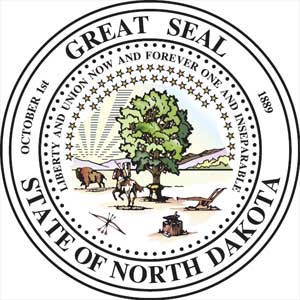Climate Change Adaptation - North Dakota

Climate Change History
The USGS Northern Prairie Wildlife Research Center located in North Dakota has been active in wetlands and climate change issues for many years. Its research focuses on the Prairie Pothole Wetlands. http://www.npwrc.usgs.gov/resource/wetlands/pothole/prairie.htm. Prairie wetlands are important for carbon storage. In 2003, the State of North Dakota published its Integrated Planning Report and Environmental Impacts Statement for Environmental Resources,” which outlined various changes in climate scenarios (predicted for the future) for water resources. It also detailed changes in groundwater and flow regimes in watersheds, specifically for the Devils Lake watershed. The North Dakota State Climate Office contributed to the Regional Climate Trends and Scenarios for U.S. National Climate Assessment – Climate of the U.S. Great Plains, released January 2013. Notably, North Dakota’s climate has changed more dramatically than any other state. Its annual average temperature changed 0.26° F per decade during the last 130 years, the fastest increase in the nation.” (See National Climate Assessment for Great Plains.)
Current & Future Action
While the State has not taken any action with regard to climate change, invasive species are a source of concern for the State. The North Dakota Game and Fish Department has developed a predictive model for aquatic nuisance species called the ANS Trophic Cascade Model. The tool uses an excel spreadsheet intended to provide rough estimates of the effects of invasive species entering a food web. The North Dakota Game and Fish Department is also developing an invasives model using the ‘growing degree days’ method used by agriculture to determine crop viability. This method uses estimates of temperature to determine how many days of the year, on average, a region will experience temperatures within the optimal range for an organism to thrive.
Pilot Programs/Current Studies
The state does not, as yet, have any specific, official pilots or case studies dealing with wetlands and climate change.
For More Information
Prairie Wetlands Carbon Storage Fact Sheet (USGS)
http://www.npwrc.usgs.gov/about/factsheet/carbon.htm
Research on Prairie Pothole Wetlands, Carbon Sequestration
http://www.npwrc.usgs.gov/about/factsheet/wetlands.htm
North Dakota State Climate Office
http://www.ndsu.edu/ndsco/
